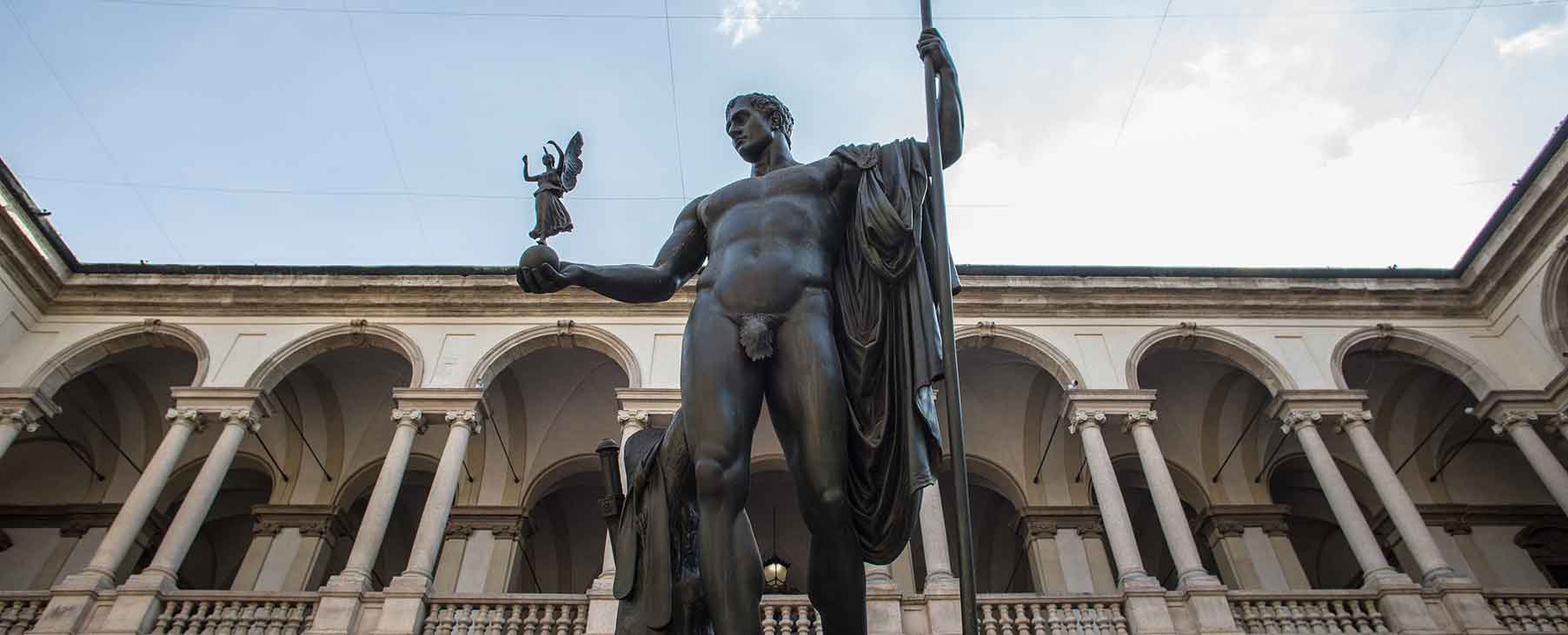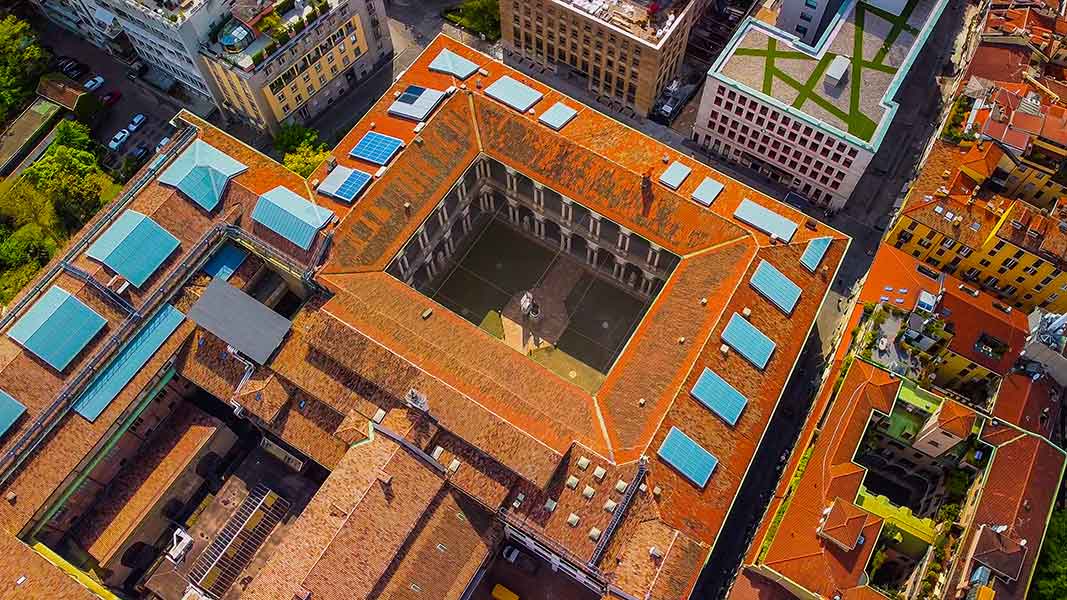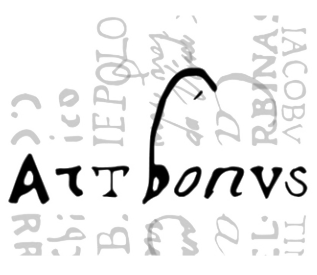
History of the Palace
The Brera Palace was built on a former 14th-century convent of the Humiliati order and later passed to the Jesuits, who established a school there.
Brera magic box
The Brera Palace was built on a former 14th-century convent of the Humiliati order and later passed to the Jesuits, who established a school there. The palace reveals itself as one of the places with the highest density of historical stratification in the city. Its present solid and austere layout is due to architect Francesco Maria Richini, who worked on it in the early 17th century.
In 1773 due to the dissolution of the Jesuit order, the Brera College became state property, and Empress Maria Theresa of Austria wanted to make it the seat of some of the city’s most advanced cultural institutes that still exist today: the Academy of Fine Arts, the Lombard Institute for Science and Letters, the Braidense National Library, the Astronomical Observatory, and the Botanical Garden, to which the Pinacoteca di Brera would later be added.
 Veduta aerea del Palazzo di Brera
Veduta aerea del Palazzo di Brera
The Braidense National Library is perhaps the place that, more than any other, explains its extraordinary stratification. It in fact includes a seventeenth-century part, dating back to when the Jesuits lectured to the Milanese of good family with texts that are now very rare, a late eighteenth-century part, the new room commissioned by Maria Theresa of Austria as part of the project to open the Library directed by the architect Piermarini creator of the Scala theater, a nineteenth-century part with the Napoleonic extension, of which the technical eccentricity of the trompe d’oeil to suggest a higher ceiling fugue is visible, probably inspired by Bramante’s perspective games in San Satiro, to end with the new spaces built in the twentieth century and the more recent Room where Umberto Eco’s Rare and Ancient Books Collection is kept.
The Library contains real treasures that tell of Milan and our literary history, invaluable documents among which should be mentioned the various autograph and printed versions of Alessandro Manzoni’s Promessi Sposi (The Betrothed), before and after the rinsing in the Arno, the very first editions of texts by Foscolo, and a fine personal script belonging to the writer himself.
Support us
Every visitor to the Biblioteca Braidense and the Pinacoteca di Brera deserves an extraordinary experience, which we can also achieve thanks to the support of all of you.






